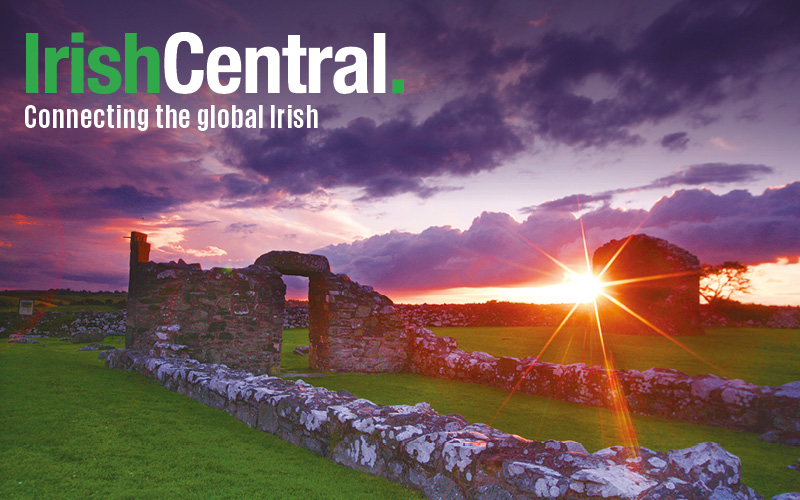Many scholars contend that our prehistoric ancestors gave up their hunting-and-gathering lifestyle once they learned how to bake bread. Although there is evidence that barley was sown and harvested over 10,000 years ago, why seed was first planted remains a puzzle.
In the 1950s, archaeologist Robert Braidwood at Chicago University suggested that discovering bread-making methods led to the domestication of cereal grains. Botanist John Sauer at the University of Wisconsin argued that the work involved in collecting wild grain was too much trouble if the only reward was a bit of bread. Theorizing that a bowl of grain may have been accidentally left out in the rain where the combination of moisture and air-borne yeast caused the seeds to ferment and produce a mildly alcoholic beer, Sauer suggested it may well have been a thirst for beer that turned early humans from foragers into farmers.
Whether bread or beer first motivated the Celts into tilling Ireland’s rocky soil will never be known, but both are mentioned in the Brehon Laws. Surprisingly, the Laws allowed anyone to brew ale and only its public sale was restricted. Bread, however, was regulated by weight, dimension and end consumer. Bairgin banfuine (woman’s bread) was two fists wide and a fist thick while bairgin ferfuine (man’s bread) was twice as large. A third loaf, bairgin indriub, was baked fresh daily and never sliced, since it was prohibited to serve visitors something that had already been cut.
The kind of grain used depended largely on who would be eating it. Wheat was scarce, and loaves made from it were consumed almost exclusively by chieftains and kings. Barley, which was associated with hardship and penance, was eaten by monks. On weekdays their spartan meals consisted of barley bread and water, but on Sundays and holy days they feasted on wheat bread, broiled salmon and mugs of ale. Oats were the most abundant grain crop, and oat bread was a principal food for Ireland’s poor. Well into the 19th century, millions of emigrants took oatcakes as provisions on the long voyages that carried them to new homes across the sea.
Bread was such a key element in the Irish diet, and famine such a constant threat, that people believed bread was a talisman that would ward off hunger. Bits of bread were often used instead of coins to close the eyes of the dead. Travelers carried dry crusts in their pockets to ward off being cursed with starvation should they stumble on the grave of a famine victim. Many people put out plates of breadcrumbs to appease malevolent spirits bent on doing mischief in the land of the living. Wasting bread was unthinkable. Even the smallest scraps were saved to make puddings and thicken stews.
When the Normans arrived towards the end of the 12th century, they introduced the native Irish to two new eating styles: pastry and “trencher” bread. In the homes of wealthy barons and merchants, clever cooks added exotic spices brought back from the Middle East by Crusaders to make sweet custard fruit tarts and savory pies filled with fowl and game. And in all Norman households, meat and fish courses were served on thick slices of stale bread called “trenchers.” When the meal was finished, the gravy-soaked bread was gathered up and given to servants, thrown to the dogs, or distributed to poor people waiting outside the gates.
A new grain was added to the Irish bread-making tradition when the United States shipped corn meal to Ireland during the famine years. This Indian or yellow meal was mixed with white flour, scalded with salted boiling water, rolled out two fingers thick, cut into scone shapes and baked. Although quite different from any bread the Irish had ever tasted, corn meal scones saved many from starvation.
In medieval times, monasteries were responsible for feeding their own sizable communities, thus, monastery kitchens were equipped with huge wall ovens where many loaves of bread could be cooked at one time. Owners of large landed estates could also afford the luxury of baking ovens, but until just this century the general population baked its bread on the open hearth.
Actually, Ireland’s most well known breads owe their fame to the fact that hearths had no built-in ovens. The earliest baking method consisted of wrapping bits of dough in cabbage leaves and laying the parcels in a warm corner of a smoldering fire until the leaves were singed and the bread cooked. When stone hearths evolved, a lec (bakestone) in the hearth was piled with embers until it was heated through. Then the ashes were brushed aside, a flat circle of dough scored into four triangular farls was laid on the hot stone, and the embers were moved to a new position. When the bread was cooked on its under surface, it was flipped and moved to the second spot to finish baking.
When blacksmiths began forging cast iron kitchen implements, three new cooking utensils became the cornerstones of Irish bread-making. The lan (griddle) replaced the bakestone as it could easily be moved to rest on fresh hot embers. The deep three-legged bastable pot (which gets its name from Barnstable, Devon where it was manufactured) produced a high-topped loaf, could stand anywhere in the hearth, and had a lid where red-hot embers were piled which eliminated having to flip the dough halfway through its baking time. Fenders were ornate wrought iron stands against which thin oatcakes were leaned so they could dry evenly and absorb a smoky flavor.
Through the centuries Irish bakers used many different leavening agents to make their bread rise. In early Christian times, dough was leavened with barm, a liquid yeast product of beer brewing. Another ancient method employed a sourdough starter, which is a piece of fermented dough left over from a previous baking. Because adding the starter to a fresh batch of bread caused the new dough to rise magically, the small bit was called “blessed bread.” Surprisingly, soda bread did not enter the Irish baking tradition until the 19th century when baking soda (sodium bicarbonate) was invented. When added to wheat flour along with buttermilk, it produces the flavorful loaf that is now almost synonymous with Ireland.
There is little that can compare to the taste of fresh-baked wholemeal brown bread, soda bread, farls or oatcakes slathered with butter and homemade fruit preserves, but the Irish make a wealth of other baked goods too. Originally, only honey was added to make sweet breads for special occasions. Norman cooks added exotic spices and dried Mediterranean fruits, inventing gingerbread and currant cakes. Tudor English introduced caraway seed cake served with glasses of purloined Spanish port as an afternoon treat.
But it was almost certainly an Irish brewer who thought to stir Ireland’s other favorite grain products into a select few of its baked delights. By adding a wee bit of porter or stout to plain fruitcake dough, or a splash of whiskey to chocolate cake batter, both are transformed into masterpieces of the Irish baking tradition and singular examples of Irish hospitality.




Comments